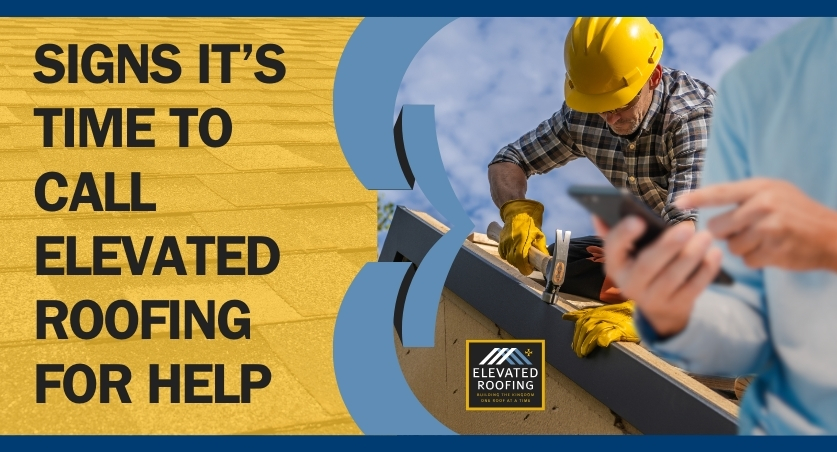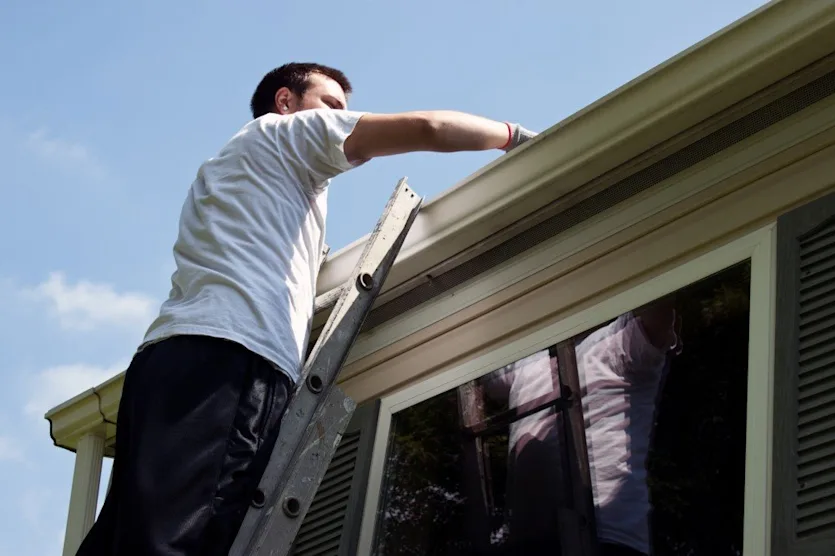Top 7 Summer Roofing Tips for Residential Roofing Maintenance
When your home represents one of the biggest investments of your life, it is important to adopt a routine maintenance plan to help protect it, so let’s look at the top roofing tips every homeowner should know for optimal residential roofing maintenance.
A well-maintained roof offers peace of mind knowing that your family is safe and secure. But how can you maintain your roof and protect your investment? Follow these summer roofing tips for residential roofing maintenance to get started. With some yearly TLC, your roof will last you for years to come.
Our team at Elevated Roofing never encourages DIY repairs, maintenance projects or DIY roof replacement that would put you in danger. However, we do offer a few roof maintenance tips that will help you avoid future problems and make you more aware of your roof’s condition.
Roofing Tips for Residential Roofing Maintenance This Summer
 #1: Inspect Your Shingles
#1: Inspect Your Shingles
Texas weather is often unpredictable. Storms, high winds and hail can damage the shingles on your roof. At the top of our list of roofing tips for residential roofing maintenance, we recommend checking your shingles for signs of damage frequently—especially after storms with high winds or hail. You can do this from ground level. We do not recommend climbing up onto your roof and putting yourself in danger.
When looking at your shingles, check for:
- Broken shingles
- Missing shingles
- Dented shingles
- Shingles with dark spots
- Torn shingles
- Cracked shingles
- Curled shingles
- Shingle granule buildup in gutters
- Shingle granules around the perimeter of your home
Finding any of these red flags during a perimeter inspection from the ground warrants a call to a local, professional roofing contractor. Many experienced roofers in Texas give free roof inspections, including Elevated Roofing.
#2: Check the Caulk Around Your Home’s Flashings
Most homes have specialized caulk located around its chimney flashing and vent pipes to give extra protection from leaks. As part of your regular residential roofing maintenance, look for signs of worn out or missing caulk. Some less professional roofers may use caulk that isn’t actually intended for roofs.
Specialized sealants protect against major water leaks. During your annual roof inspection, your roofing contractor can make sure it is intact and still offering the best protection. Sealant issues are easy to repair. By getting rid of damaged caulk and creating a new watertight seal with specialized, quality sealant, you can prevent serious issues from escalating.
Please keep in mind though, it may be best to call a professional for this job, as you can’t use just any caulk on your roof.
#3 Remove Debris from the Roof
Over time, and especially during severe Texas storms, debris will begin to collect on your roof. From sticks and leaves to windblown trash, this material will accumulate and eventually cause problems that could lead to serious damage.
Organic material decays and can work its way underneath asphalt shingles. Left unchecked, this decay will promote mold and moss growth or cause roof leaks that will often result in extensive water damage.
Therefore, number three on our list of summer roofing tips for residential roofing maintenance is that homeowners should remove any loose debris from their roof, provided it can be done safely. Not only will it help to avoid potential repair problems, but it will also reduce the risk of injury when loose material is unexpectedly blown from the roof.
#4 Inspect Roof Gutters and Downspouts
Number four on our list of summer roofing tips for residential roofing maintenance: Clear your gutters and downspouts safely or call a professional!
Clogged gutters and downspouts will eventually lead to a backup of material that can cause rot and water damage to the soffit and fascia boards. This problem does not stop at the roof. Splash back from poor drainage can destroy wood siding and expensive landscaping around the perimeter of the home.
Gutters should be kept free of debris, especially following storms that have left windblown material in their wake. Again, homeowners need to use discretion when taking on this project. Whenever there is a safety concern, always contact a professional roofing contractor.
#5 Treat All Algae, Mold and Moss on the Roof
While this may not be an issue for most Texas residents, heavily shaded roofs that are consistently exposed to moisture will promote the growth of moss, mold and algae. You can gently scrub the affected portions of your roof with a commercial product or a homemade solution of chlorine bleach and water as part of your residential roofing maintenance. If you don’t feel comfortable doing this yourself, you can also call a professional to do it for you.
However, the best way to treat this is to prevent it from occurring in the first place. Keep your gutters clean. This will promote proper drainage that will reduce the risk of moisture buildup. You should also consider trimming tree branches that shade your roof. This will allow for more sunlight and less buildup from falling debris.
#6 Trim Branches Near Your Roof
Larger trees near your home can cause damage to your roof in a variety of ways. They can drop debris and larger sticks during storms. Weaker trees can fall on your home in poor weather. Each year, inspect your trees for signs of rot or disease. You should trim branches back and away from your home as part of your residential roofing maintenance work as necessary.
If you don’t feel confident in your ability to safely trim trees or you don’t have the proper tools, hire a professional. Don’t take risks with your own safety.
#7 Check for Sun Exposure
Living in Texas, your roof may suffer from the effects of the UV rays. The sun slowly damages shingles over time with its UV rays. There’s nothing you can do about the sun, but your roofing contractor might be able to mitigate damages. These rays can heat up roofing materials and dissipate protective oils. This can damage your roof quickly. Ask your local roofing contractor to check for signs of sun exposure and then work with your roofing expert to mitigate those effects as best you can.
If you do have severe UV damage to your roof, that’s your sign to think about choosing a more optimal roofing material during your next roof replacement. GAF shingles pass for durability from long-term sun exposure.
 When to Call Elevated Roofing, Your Trusted Roofing Professional
When to Call Elevated Roofing, Your Trusted Roofing Professional
Your roof is important. But it is not as important as your safety. Inspecting a roof and making minor repairs can be dangerous. Climbing ladders, inspecting gutters and trimming trees can lead to serious injuries and accidents. We recommend that you leave it to a professional roofing contractor to perform a full roof assessment.
Routine maintenance plays an important role in extending the life of your roof system. It can help you find small issues that could be signs of more serious problems.
Other signs of roof damage include:
- Damaged flashing or vents
- Leaks in the attic
- Water stains or peeling paint inside or outside of your home
- Sudden rises in energy costs
- Sagging roof
- Mold or mildew in the home
Small roofing problems can become big roofing problems quickly. For this reason, it is important not to delay when you notice signs of roofing wear and tear. Homeowners who fail to repair these problems quickly are putting their entire home at risk. A leaky roof can cause mold and mildew to accumulate in the attic or in the walls. It can compromise the structure of the home and lead to serious and costly repairs down the road.
Residential Roofing Maintenance should not replace a Yearly Roof Inspection.
These roofing tips can help you mitigate potential damage to your roof, but part of your residential roofing maintenance plans should be calling a trustworthy roofing contractor and getting an inspection every year. You should also get your roof inspection if you see any indication of damage after serious events like strong storms, hail, a lightning strike or a fire.
Annual inspections can empower you to mitigate risks to your roof, but they can also provide you with the crucial documentation you may need if you ever have to file an insurance claim for roof repairs or replacement. Demonstrating that you’ve maintained your roof and providing proof of its pre-claim condition can help ensure that your insurance company will approve your claim.
Contact Elevated Roofing About Your Roof Today
Do you believe that normal wear and tear or an unfortunate storm has compromised the safety of your roof? If so, contact us today to schedule your courtesy, no-obligation roof assessment. We will provide a detailed assessment of your roof’s condition, and offer the best possible options for keeping your home and family safe and secure. Call us at (469) 305-0010 or contact us online to get started.





Comments are closed